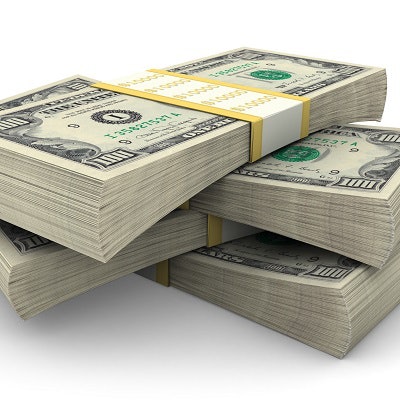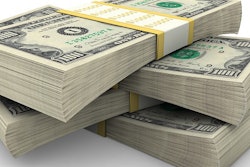
U.S. healthcare spending grew to reach $3.5 trillion in 2017, for a growth rate of 3.9%, which is almost a percentage point lower than in 2016, according to an analysis from the U.S. Centers for Medicare and Medicaid Services (CMS) published online December 6 in Health Affairs.
This low rate of growth was similar to the average annual growth between 2008 and 2013, which predated health insurance expansions, wrote a team led by Anne Martin from CMS' Office of the Actuary.
"Over this period, which included the end of the Great Recession, overall economic growth was low, and accordingly the health spending share of [the gross domestic product, or GDP] increased by 0.9 percentage point from 2008 (16.3%) to 2013 (17.2%)," the authors wrote.
Health spending's share of U.S. GDP remained stable, from 18% in 2016 to 17.9% in 2017.
Martin and colleagues found that private health insurance spending increased 4.2% in 2017, slower than 2016's growth of 6.2%. Hospital spending grew 4.6%, compared with 5.6% in 2016, reflecting a slowdown in the use of and intensity of services. Physician and clinical services spending grew 4.2% to $694.3 billion, compared with 5.6% in 2016.
Martin's team also determined the following:
- Private health insurance spending reached $1.2 trillion and accounted for 34% of total healthcare spending, which the group attributed to slower growth in medical benefits and a decrease in fees and taxes resulting from the Consolidated Appropriations Act of 2016.
- Medicare spending reached $705.9 billion and accounted for 20% of total health expenditures.
- Medicaid spending grew at a rate of 2.9%, much slower than 2016's 4.2%, to reach $581.9 billion and account for 17% of total healthcare spending.
- Total expenditures for physician and clinical services hit $694.3 billion and accounted for 20% of overall health spending.
- Hospital spending reached $1.1 trillion, representing 33% of all health expenditures.
The rate of healthcare spending in 2017 converged with the U.S. economy's growth, which steadied the healthcare spending side, Martin and colleagues noted.
"Healthcare spending grew 3.9% in 2017, about the same rate at which the overall economy increased, and as these two growth rates converged, the health spending share of the GDP stabilized," the team wrote. "This was the first year since 2013 that this share did not increase, as 2014 and 2015 were marked by insurance coverage expansion and expensive new drug treatments that produced faster growth in healthcare spending, while 2016 was affected by low economic growth."
The findings definitely differ from trends in the previous 10-year period, according to Martin and colleagues.
"Viewed from a longer historical perspective, the rate of growth in health spending over the past decade contrasts with the experience of the prior 10-year period," the group wrote. "For this most recent decade, growth in both excess medical-specific inflation and the use and intensity of healthcare goods and services was slow relative to historical trends, despite the fact that this period included the largest increase in health insurance coverage since the 1960s."
The report will also be published in the January 2019 issue of Health Affairs.



















